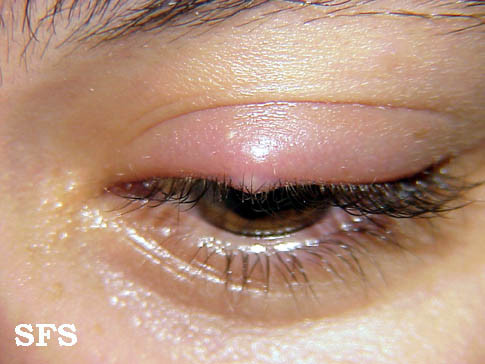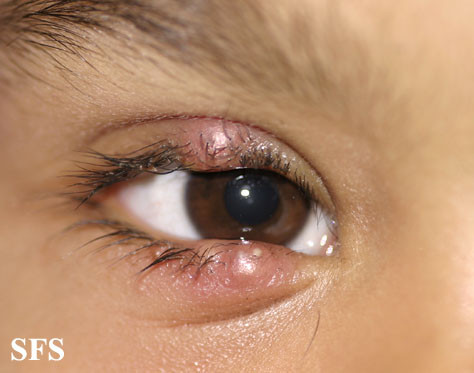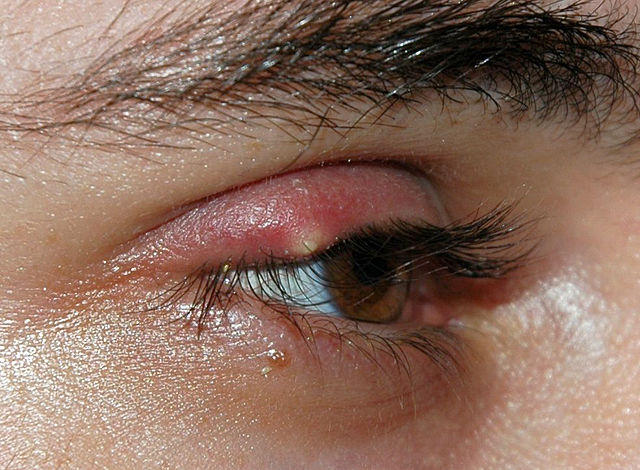Stye (Hordeolum) Causes, Pictures, Treatment, Remedies
Most of us have suffered with a stye at some time in our life. For some people it is common occurrence. Styes are usually not serious and lasts for a few days to one to two weeks at most. There are numerous purported cures for styes with home remedies, including spices, herbs and even rubbing the stye with a gold ring. But most of the time a stye does not require any medical treatment and will resolve on its own. Understanding how styes arise and why it may recur is important in preventing it in the first place.
What is a stye?
A stye, also known as a hordeolum, is a common infectious disorder of the eyelid. It occurs when the glands of the eyelids become infected and should not be mistaken for a chalazion where these same glands become blocked and inflamed. A stye is an acute condition. It arises suddenly and quickly resolves, often without any treatment. It mainly occurs on the outer part of the eyelid usually towards the margin of eyelid. Sometimes it can occur on the inner eyelid.
Styes are easily prevented and can be simply remedied with a few conservative measures. It tends to affect women and men equally although the use of eye makeup is one of the major risk factors. Adults are more likely to develop styes and this may be linked to the higher androgen levels although styes can also occur in children. It is never advisable to squeeze or pinch a stye in an attempt to drain it. This should only be done by a medical professional is the stye is very large or persisting and not responding to medical treatment.
Causes of Styes
The two eyelid glands that can become infected in a stye is known as the meibomian gland the Zeis gland. The meibomian gland secretes an oily substance from the inner eyelid which contributes to the tears that coat the surface of the eyeball. The oils secreted by the Zeis glands service the hair follicles on the eyelid margin (the eyelashes). A stye is usually due to an infection of the Zeis gland and is also referred to as an external hordeolum. Less commonly the meibomian gland becomes infected and this is known as an internal hordeolum.
A hordeolum is an acute focal infection. This means that it arises suddenly and lasts for a short time with the infection being restricted to a specific area, in this case the Zeis or meibomian glands. It is not a complete eyelid infection which is known as infectious blepharitis, although this can occur in some instances. Styes are due to bacterial infections unlike infectious conjunctivitis (pink eye) which are mainly a result of viral infections.
Styes are mainly caused by staphylococci bacteria. These bacteria are prevalent but are more likely to be transmitted to the eyelid by touching it with unwashed hands, through contact lens, using expired cosmetics and not removing eye makeup at night. Various skin diseases that may affect the eyelids also increase the risk of a stye, including seborrheic dermatitis and acne rosacea. These skin conditions may cause blepharitis (eyelid inflammation) with a stye arising thereafter.
Signs and Symptoms
The main symptoms is a lump on the eyelid. It is usually red and towards the margin (external hordeolum) although it can can also be on the inside of the eyelid (internal hordeolum). The lump is red and there is pain in and around it. Usually the eyelid is swollen and there may be crusting around the eyelids. Excessive tearing may also be present. It is important to note that hordeoli do not present with swelling around the eyes and eyelids as this may be due to other conditions.
Most styes are not serious. It resolves within 2 to 3 days and there are no further problems. However, there are instances where large or persistent styes may cause complications. The main such complication is visual disturbances. The lump on the eyelid may cause unevenness on the corneal surface. This may lead to astigmatism. Sometimes hyperopia (farsightedness) may also arise due to flattening of the corneal surface. These visual disturbances are not permanent and vision will return to normal a short while after the lump resolves.
Pictures of Hordeolum
Images sourced from atlasdermatologico.com.br.



Treatment for Styes
A stye usually resolves on its own within 1 to 2 weeks although it can last longer. Most cases do not require medical treatment. However, if the stye is large or persisting then medical and sometimes even surgical intervention may be necessary.
- Topical antibiotics, in the form of eye drops or a cream, may be prescribed. Oral antibiotics are rarely necessary but may be prescribed if the stye is not resolving or if the swelling is extending.
- Surgical intervention in the form of incision and drainage may be necessary if the stye is very large and not responding to antibiotics. It is advisable that a tissue sample be sent for laboratory investigation.
Remedies for Styes
Despite the various home remedies that claim to ‘cure’ styes, a few simple measures are all that is needed.
- Warm compresses should be applied to the eyelid and used to gently massage the stye. This can be done with soaking a cloth in hot water but do not use boiling water. This should be done 4 times a day for around 10 minutes at a time.
- Wash the eyelid thoroughly with warm water and mild baby shampoo. It should be done twice daily and continued if styes are recurrent or eye makeup is used.
How to prevent styes?
Styes can be prevented by avoiding or removing the known risk factors. This includes:
- Avoid eye makeup as far as possible. Wear it only for a short period of time if necessary and ensure that it is thoroughly removed thereafter. Never sleep with eye makeup.
- Replace old contact lenses if repeated styes are a problem. Ensure that lenses are stored in a proper contact lens solution when not being used. Disposable lenses should be discarded after a stye.
- Discard old or contaminated cosmetics, including eye makeup. Bacteria within it cannot be removed and it can cause repeated styes with continued use.
- Always wash hands thoroughly especially when touching the eyes. Contact lens users have to ensure that an antibacterial soap and warm water is used before inserting or removing lenses.




